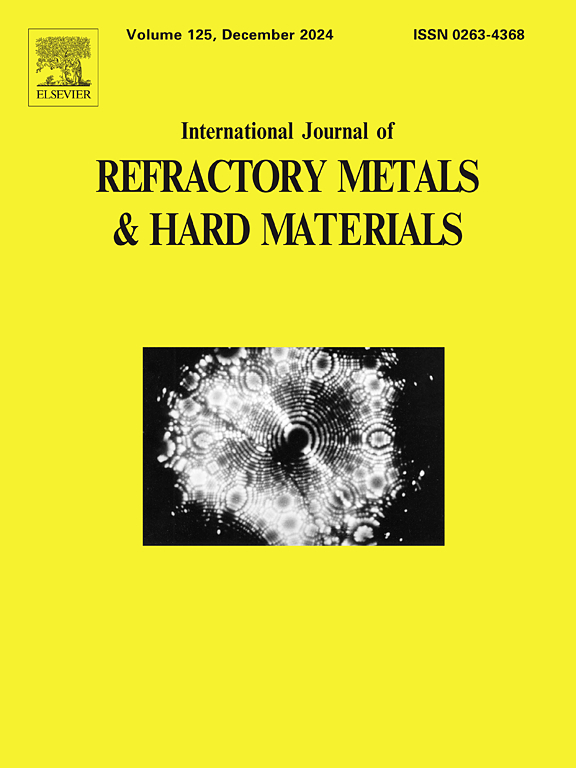Surface degradation of ultrahigh-temperature ceramics based on HfB2–30vol%SiC in subsonic nitrogen plasma flow
IF 4.2
2区 材料科学
Q2 MATERIALS SCIENCE, MULTIDISCIPLINARY
International Journal of Refractory Metals & Hard Materials
Pub Date : 2025-03-05
DOI:10.1016/j.ijrmhm.2025.107139
引用次数: 0
Abstract
The behavior of ultrahigh-temperature ceramics of the composition (HfB2–30vol%SiC)-2vol%C(graphene) under the influence of subsonic flow of dissociated nitrogen has been studied. It is shown that at the chosen exposure parameters, at the steady-state surface temperature ∼ 2170–2190°С, surface degradation of the material is observed to a depth of about 10–20 μm. This is expressed by the fact that, as a result of the ongoing reactions, silicon carbide is removed from the near surface zone and HfB2 is transformed into the hexagonal phase of low hafnium nitride Hf3N2. It is noted that the phase composition of the surface in this case is significantly different from that observed after impact on ceramics based on HfB2-SiC supersonic flow of air plasma. The data obtained may be useful for evaluating the prospects of using ceramic composites for the exploration of space bodies with atmospheres of high nitrogen content.

求助全文
约1分钟内获得全文
求助全文
来源期刊
CiteScore
7.00
自引率
13.90%
发文量
236
审稿时长
35 days
期刊介绍:
The International Journal of Refractory Metals and Hard Materials (IJRMHM) publishes original research articles concerned with all aspects of refractory metals and hard materials. Refractory metals are defined as metals with melting points higher than 1800 °C. These are tungsten, molybdenum, chromium, tantalum, niobium, hafnium, and rhenium, as well as many compounds and alloys based thereupon. Hard materials that are included in the scope of this journal are defined as materials with hardness values higher than 1000 kg/mm2, primarily intended for applications as manufacturing tools or wear resistant components in mechanical systems. Thus they encompass carbides, nitrides and borides of metals, and related compounds. A special focus of this journal is put on the family of hardmetals, which is also known as cemented tungsten carbide, and cermets which are based on titanium carbide and carbonitrides with or without a metal binder. Ceramics and superhard materials including diamond and cubic boron nitride may also be accepted provided the subject material is presented as hard materials as defined above.

 求助内容:
求助内容: 应助结果提醒方式:
应助结果提醒方式:


